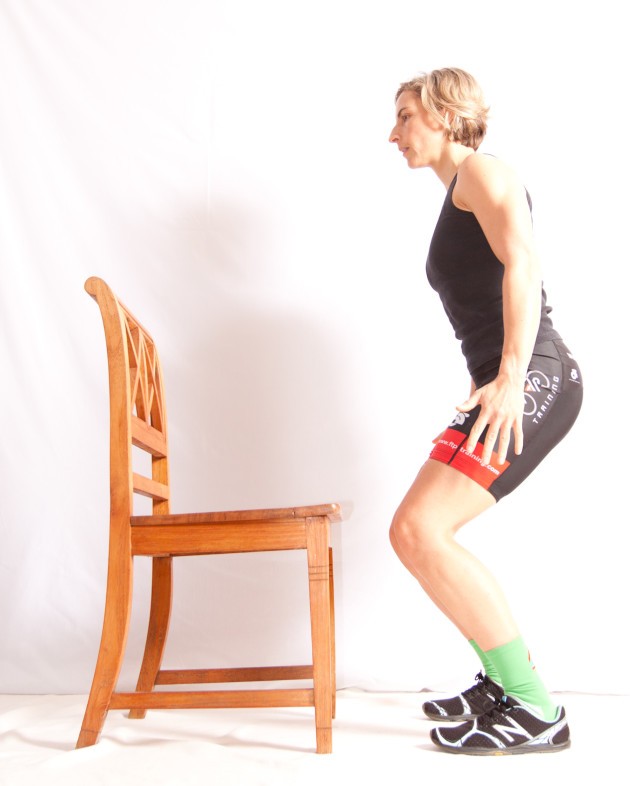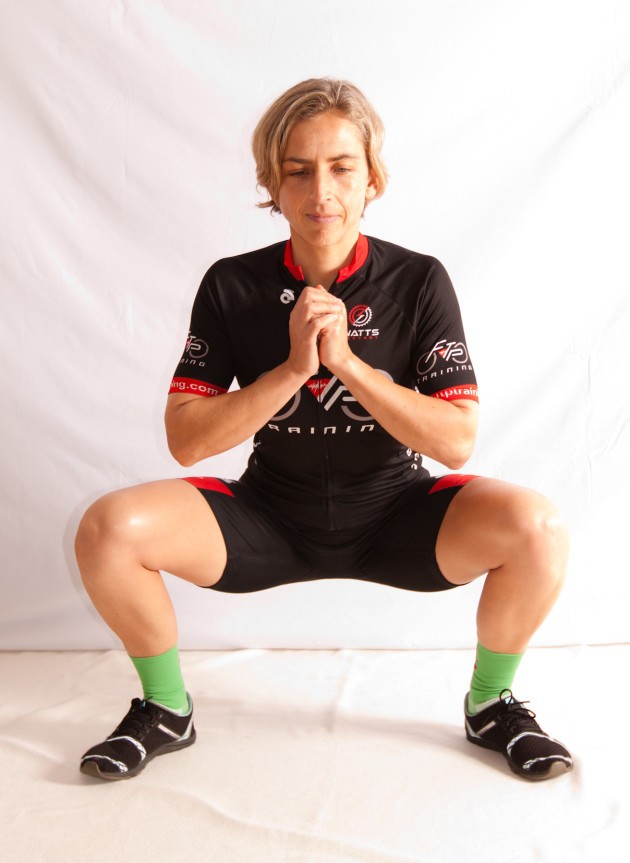In the past the standard response to this question would probably have been “not really, just put time in on the bike”. It goes without saying that time on the bike is needed and it will improve your leg strength and aerobic capacity, but that is only one part of the story.
Increasingly, competitive and recreational cyclists are finding that strength training allows them to use their muscles more efficiently, reduce time to fatigue and have that little bit of extra power at crucial stages in a race.
Changing the way you train and work out will enable you to increase strength without adding large amounts of muscle, will increase your resistance to injury and best of all will make you faster on the bike. How will it make you faster? By targeting the major muscles groups used while cycling will make your muscles stronger and enable you to produce more power. The greater your maximum strength, the greater your potential for strength endurance i.e. you will be able to produce more force over a longer period of time.
There are plenty of other benefits to strength training other than making you faster on the bike which include increasing bone density, tendon and ligament strength, and lean muscle mass.
By the time we reach age 40, we slowly begin to lose bone mass. Studies have shown a direct relationship between the effects of strength training and improvement in bone density. Cycling is not a weight bearing sport, and combined with the large amount of sweating lost during cycling, we are susceptible to a loss of bone density.
There is a general consensus that there is a 1% decrease in muscle mass per year once someone hits their 30s. This results in a reduction in Basal Metabolic Rate (BMR) which is the amount of calories burnt at rest. A reduction in BMR means the body is less able to use the food eaten as energy and so more gets stored as fat. Muscles have a high energy requirement, so increase in muscle mass leads to a higher BMR, higher BMR means more food can be consumed without gaining weight.
Contrary to popular misconception amongst female endurance athletes, lifting heavy weights will not result in them looking like Arnold Schwarzenegger with huge bulging muscles! This is due to the simple fact that most women do not have enough testosterone in their body for this to happen. Women also have smaller muscle fibres than men, thus limiting the likelihood of huge muscles.
Winter is a good time to start this new approach as most of us are probably struggling to spend as much time on the bike as we would like, or some are just taking a well deserved break from the intensity of structured training. So let’s embrace this spare time and plan some strength training.
Cycling isn’t just about good quad strength, but your core, lower back, triceps and neck take a lot of strain from time in the saddle and continual pedaling. When you start to fatigue on the bike it’s not just the legs that fatigue, but the core and upper body tire as well. A stronger upper body can help to resist fatigue on longer rides.
If you are new to strength training then keeping it simple is key. Choose exercises which are compound (this means more than one joint is moving and more than one muscle group is used e.g. a squat) rather than isolation exercises (only one joint is moving or one muscle group is used e.g. a bicep curl). Compound exercises provide better results than isolation exercises and should form the core of any strength and conditioning program. Compound exercises use more muscle groups, simulate real world activities such as cycling and allows you to get a full body workout faster than working each muscle group independently.
Having said that, isolation exercises do have their place. They can be prescribed to correct muscle imbalances or weakness that may result after injury. Isolating that particular muscle can help it to fire again and regain strength.
Keeping it simple means choosing exercises that are within your reach to start off with. Just because you see someone doing a single leg Romanian Deadlift in the gym doesn’t mean you should be doing them too. Think of your strength training progressing in the same way your bike skills have; start simple, practice, keep good form then progress to the next level. An example of progression for squats would be body weight squats -> dumbbell squats -> barbell squats -> single leg squats.
The same principles of training for cycling will apply to strength training. To get stronger you will need to apply progressive overload. What does this mean? In a nutshell it means if you keep doing the same number of exercises at the same weight and the same number of reps then your strength will stagnate and you won’t see any further improvements. Do not fear though as there are many ways to apply overload to your program. In the first instance just simply changing up the order of the exercises in your program will give a different physiological response. Other ways to overload are to increase the number of repetitions in each set, say from 10 to 12, to increase the weight (e.g. progress from body weight squats to dumbbell squats) or to increase the number of sets (e.g. from two sets of 10 reps to three sets of 10 reps). Note that you only need to pick one of these to change at any one time.



PYLOMETRIC JUMPS – works glutes and hamstrings
Ensure your chair or box is strong, stable and placed on a non-slippery floor. Start with your feet shoulder width apart. Use explosive power to jump up. Land softly on the box. Step down.

GLUTE BRIDGE – works glutes and hamstrings
Squeeze glutes and tilt pelvis so you are flattening your back against the floor. Lift hips and thighs off floor to form a straight line between knees and shoulders.

BIRD/DOG – works lower back
and balance.
On all fours, knees under hips and hands under shoulders. Engage core by drawing belly button towards your spine. Raise arm and opposite leg so they are inline with torso. Thumb points up. Repeat on other side.

FOREARM PLANK –
mimics TT position
Forearms on the floor with elbows directly under shoulders. Ankles, hips and shoulder in a straight line. Squeeze glutes and abdominals. Look down at the ground to help maintain a neutral neck position.

PUSH UP – works chest, shoulders and triceps
Start in a high plank position with hands under shoulders, maintain strong core at all costs. Straight line from heels to hips to shoulders. Lower to the ground, touching chest to ground, push yourself back up, all the time squeezing your glutes and driving your heels back.

FOREARM SIDE PLANK – for a strong core
Forearm on the floor with elbow directly under
shoulder. Keep one foot ontop of the other and raise your body up off the ground. Maintain a straight line from neck to feet. Top hand can rest on top hip or raise directly up for a great level of difficulty.

SEATED RESISTANCE BAND ROWS – works back, shoulders, biceps
Maintain a slight bend in the knees. Torso upright, chest up, shoulders back. Pull band towards stomach, think about squeezing your shoulder blades together in this movement.

SUMO SQUAT – works quads
Standing with feet wider than shoulder width and toes pointed out.
Bend at hips and knees to push the butt back as you squat down. Lower back maintains a natural arch and chest. Knees track over the toes.


